Taking a therapeutic bath in cyanide…
Danny Elfman is an odd duck. In fact, he is so odd he is not so much a duck, as more so a contorted platypus preserved like a curio in a glass jar. Across his sprawling CV, the red-headed maestro has a unique sound that has evolved independently yet in parallel with his contemporaries. During this evolution, the uncanny Mr. Elfman conjured his own slant on punk, gothic, new wave, art-rock, and classical music, eventually becoming one of the most prolific and iconic film composers in Hollywood, leaving him as a singular artist in the history of music over a career that spans four decades.
Beginning with his tenure in The Mystic Knights of Oingo Boingo, a theatrical world music and jazz percussion ensemble, that led to an appearance as Cab Callaway singing Satan in his brother Richard Elfman’s 1980 Cult Classic film Forbidden Zone, Danny would mutate this band into a ska-driven act pared down to the more simple nomenclature Oingo Boingo. Oingo Boingo would last from 1979 to 1995, with the 1981 debut album Only A Lad setting an acerbic yet playful tone satirizing all aspects of society, with songs like “Little Girls” being written with acid sarcasm towards the Jeffrey Epstein’s of the day.
In 1984 Danny would release his first solo record So-Lo, which featured the fantastic new-wave-infused single “Gratitude”, but this would be the last record of its kind from Mr. Elfman for 37 years.
By 1985, Oingo Boingo became an 80’s film soundtrack staple, recording the theme song to Weird Science, and making an appearance performing the title track of their album “Dead Man’s Party” in the film Back to School.
It was this same year that Danny would begin his film scoring career and his long-time collaboration with director Tim Burton on Pee Wee’s Big Adventure. By 1992, Elfman’s collaborations with Burton would list iconic films such as Beetlejuice, Batman, Batman Returns, and Edward Scissorhands, cementing his legacy as The Goth Composer. The following year Danny would take things even further along those lines by becoming Jack Skellington in The Nightmare Before Christmas, leaving many fans, friends, and contemporaries to nickname him “Mr. Halloween”.
And on All Hallows Eve 1995, Oingo Boingo would say farewell with a final performance at the Universal Amphitheatre in Los Angeles, a curtain call that was seemingly the end of Elfman’s career as a rockstar.
In 2020 however, there was a planned return to the stage at Coachella with reworked and rearranged Oingo Boingo tunes and new songs—Elfman’s first new material in nearly three decades. The performance was also to include visuals curated by Austrian Art Director Berit Gwendolyn Gilma.
But, the Coronavirus global pandemic hit, and the plans for Coachella were scuttled, leaving Danny in lockdown with his family, and his art director Berit to flee to her home in Berlin. Neither were happy, but both decided instead of feeling sorry for themselves, they would instead make the best out of a messy situation.
Fortune bears strange gifts, as with no film scores planned in 2020, Danny Elfman reignited his rockstar fervor while in lockdown, turning two new songs into a two-LP double album. The result was Big Mess, a creative work exploring dystopian themes of the scope not seen in rock since David Bowie’s 1995 double album 1. Outside.
But while the Bowie album was a conceptual work exploring a fictional world culled from the most deranged parts of his imagination, Elfman’s new album is a reflection of the anxiety of the world we are actually living in. A world that has become so surreal and stranger than fiction it steps outside our previous concept of reality.
Post-Punk.com’s Editor in Chief Alex Baker recently had the pleasure to speak to Danny Elfman about the album Big Mess on its development, themes, and more…

Alex: Big Mess feels to me to be very avant-garde and experimental. Do you think that experimental element has always been there in your music..?
Danny: Actually, I’m probably the worst one to answer that question, because I’m like a really, really poor analyst of my own music. Over the years I’ve never really known what to call what I’m doing, and different people perceive it in different ways. So the fact that you’re saying that is super interesting to me, because I actually don’t really have a handle on it. I know that sounds crazy, but as I was writing this stuff, I really wasn’t quite trying to do any specific thing, other than I knew I had a sound in my head that involved…centered around guitars as opposed to synths, just as an audio center. I knew that I wanted to use an orchestra, because, again, I had this thing in my head that started with the song “Sorry”, which was like, a way to combine orchestra and a rock band, and that kinda started the project in a conceptual sense. When I mean conceptual, it’s just a sound, it’s a feel. I have no idea what’s gonna happen. It’s almost like setting the…like you’re gonna do a painting, and you got a blank canvas, but you’re electing to set up certain colours, specifically. So you’re giving yourself your palette and you’re only gonna use four colours. So that’s the parameter, I’m only using four colours, but I don’t know what I’m gonna do. That’s how Big Mess started. It was like, I knew that I had a guitar in my hands, and I knew that I had a feel for how I wanted to use the orchestra. Guiding more than that was impossible. It’s interesting how you’re perceiving it!
Alex: I got the impression with the release of “Happy”, which made its timely debut on Halloween, there was specifically an allusion to your past work. There’s a little Nightmare Before Christmas on there…
But while “Happy” is the track that kind of sets that tone, “Sorry” feels like it’s the key track for the record.
Danny: Definitely. So, what my intention originally would have been as I was finishing the songs was to lead with “Sorry”, because, as you’re picking up quite astutely, that kinda was the lead for the album. In fact, I did presentations for record companies, and I know nobody knew what to expect. And, I’m kind of a glutton for punishment, it’s almost like performance art for me. I always led with Sorry, just to watch their faces, because I knew that song, whatever it was gonna be, was not gonna be what they were expecting. And my feeling was, if you can’t handle this song, you can’t really handle the album. So I always led that way. But “Happy” was the second song I wrote but we decided to release it for Halloween, just because there was already this kind of crazy visual I had started with the intention of using at Coachella. And I realized that even though the singles don’t start until January, I thought it would be fun just to release the one song as a Halloween treat, because it had this kind of visually macabre sensibility. But the intention with “Happy” was to start as a pop tune. In fact, almost like a bubblegum pop tune. The idea, it’s like…oh, this could be like any bubblegum pop thing that you hear anywhere, and that slowly kind of de-evolves into something really subversive and nasty and sarcastic. And, so that kind of is what “Happy” was. It’s like, to open with something really innocent, with this kind of bubbly synthetic bassline, and by the end, it’s all about ‘puppy fucker, puppy fucker, puppy fucker.’ It was really just me having fun.
Alex: Going back to “Sorry”, I had this feeling listening to that song…and of course the video has this very Cronenberg kind of feel. Do you have this kind of fascination with the human body, or your own body?
Danny: You’ve got me nailed on so many levels! Absolutely, once again, you’re on the money. First off, I’m a huge fan of Cronenberg, and all things Cronenbergian, and always have been. I kind of have my own obsession with the body. On the one side, body design and body dysmorphia, and body destruction, and the line between those. So it is an area of fascination. I collect parts of bodies that are constantly anatomical pieces. I own a number of skulls, heads, hands, things like that fascinate me constantly. And my own body as art always seemed really fascinating to me. I’ve kind of been obsessed with African and South American body art my whole life. It’s what got me interested in tattooing. If I were a braver individual, probably I’d get into scarification, too, cause that really fascinates me. But I just have never gone down that road. But yeah I did want to use my own body. My body is part of my self-fascination, the destruction of my body. I’ve got a photo project that I’ll release in oh, twelve years called ‘Forty Years of Deconstruction.’ It’s just cataloging my own body going through when it was young and healthy to deconstructing as it’s doing now. So I decided to turn that into part of my art.
Alex: And the videos and the visuals for “Sorry” and “True” are so visceral and intense. I think some people in the YouTube comments were saying: “DANNY ELFMAN’S DOING INDUSTRIAL AND I’M SO HERE FOR IT!”
Danny: It’s funny, I’ve heard that a little bit too and it’s funny how it doesn’t surprise me, but I can totally understand how it would surprise an Oingo Boingo fan. You have to understand that in the 90s I wasn’t listening to what I was playing. I was in a ska-inspired pop band called Oingo Boingo, right? Which was a really weird…I dunno what it was? It definitely wasn’t heavy. And I knew that we could never really be heavy, it just wasn’t in the DNA of that band. But what I was listening to in the 90s that was really getting my juices going was Nirvana, which to me was like life-changing. Early NIN. When I listened to Einstürzende Neubauten, (asks for pronunciation) Fortunately I have an Austrian sitting here who can help me out with this because I could never say it. Einstuttende? I mean JESUS CHRIST! For an English-speaking person, could there be a harder name? Stoyzeehh Neubauten? Thank you. I think literally, if I had heard Neubauten in the 80s when I started out, my whole life would’ve been different, because I was building percussion. Before I was in Oingo Boingo, I was in a theatre group, and being a percussion ensemble was part of our thing. I had actually considered being an ethnic percussionist. I built two whole orchestras, a metal orchestra and a wood orchestra…this was before Oingo Boingo days. Actually, hearing this kind of percussion on stage with a rock band, it would’ve like, fucked with my head! And I’m sure I would’ve gone in that direction because, when it comes to music, the best analogy I can come to is this: I had a puppy years ago. The puppy was following me at the beach, and the puppy’s following me in my footsteps, following, following…and suddenly I turn around and the puppy’s gone, and I see that somebody else has crossed my path. The puppy just turned, and crossed, and was following another human’s feet. And I ran up and he looked at me like ‘WHAT? I thought I was following you, but I’m not!’ And that’s kinda how I am musically. I’ll be totally into something and then something else crosses my path, and I’m just off in another direction.
In 1978-ish, when I first heard ska in England, I wouldn’t listen to any music recorded after 1935. I was like this weird early jazz nerd. I was into Duke Ellington and Cab Calloway and Django Reinhardt. My brain? I lived in 1933, Cotton Club, Harlem! I was totally unaware of what was going on in the 70s. Suddenly I hear ska and I go, oh yeah, I want to do that! And that was those feet walking in front of me. Within six months, the Mystic Knights, the theatrical troupe, was dissolved, and I started what I’d intended to be: a crazy, high-energy ska band! So, my tastes change really radically.
Fortunately, or unfortunately, I didn’t hear Neubauten at that time, because I would’ve gone ‘oh yeah, all this metal percussion of mine, it totally makes sense to me. That’s where I’m going.’ But I didn’t hear that until later. But my own tastes tend to be on the heavier side, and more abstract side, and more intense side, than what Oingo Boingo was doing. And that was one of the reasons why I started getting frustrated towards the later years of Oingo Boingo. I really wanted to break out – I didn’t know into what – but I knew for the last five years I was with the band I kept saying this is our last year, this is our last year. Nobody believed me! Until ‘95, when I said THIS is our last year. But I needed to go in other directions, and instead, I just got into film scoring. Completely in the opposite direction! So, I’m rambling here but it’s a really muddled picture, it’s very confusing! It’s full of random things that happened to me, in random ways, that just totally changed my life.
Alex: I feel like the record is a reflection of that kind of thing. It’s almost like an inner dialogue with different parts of yourself, maybe? That’s the feeling I get listening to it.
Danny: Oh, totally! Here’s the thing. When I was in Oingo Boingo it was really frustrating, because I wanted to be in different bands every other year. When I got into film music I found these competing impulses could be like one extreme and then the other was not a problem, because with films you can go from one extreme to the other…you can go from really heavy action film, to a really personal tiny film, to a romantic film, to a quirky, crazy film. And I was able to let those things really go, like push one extreme into the other. And then, as I started writing Big Mess, I realized that for 30 years, I’ve unleashed these competing enemies, and they only get along only because I was able to mix up my film scores. But now that I’m writing songs, they both wanted their space. The songs almost came out in pairs, like “Happy” and “Sorry” were the first two. I think the next two probably would have been maybe “Kick Me” and “True”. They were just coming out in these very weird…by the time I had six songs, I told my manager ‘This is gonna be a weird Side A, Side B thing.’ And then by the time I had fifteen or sixteen songs I was like, I don’t know what to do with this! This is two different albums. There was a point, by the time I hit eighteen songs, where I was like okay, that’s enough! but I thought, do we put these out together? Do I put one out, and another out a year later? And I decided no, both of these are me, and I should just put them out together. I never could have decided which one of them to lead with.
Alex: To me, hearing this, makes me think of Bowie a little bit. Like Low, Lodger, and his double album 1. Outside…
Danny: Well, once again, you’re hitting the nail on the head. In the 80s, and into the 90s, I discovered Bowie late. It would’ve been Lodger, Scary Monsters. Suddenly it’s like, who is this amazing artist? And friends would go, ‘you idiot! This guy’s been around since the late 60s! You’ve never heard of Ziggy Stardust?’ And I was like, ‘Who? Ziggy who?’ I was that far out of it. But when he hit those years, well, going back, I do now love the early stuff too, but he hit a tone right around Scary Monsters that really connected to me. You can even hear some of that…if you listen to “True”, the guitars, it’s definitely part of my psyche comes from Bowie, that period. And even his later works. To me, he’s one of those artists where his voice just got better and better, and with more abandon, as he went on in years.
Alex: I really liked the song “Dance with the Lemurs”. The intro sounds like you’re Lou Reed, having a duet with Bowie. And the percussion on that track is really great.
Danny: Thank you! Thank you very much. That was the first track I wrote when I realized that holy crap, I can’t just release a double album of fast-fast, intense stuff, that I have to try to slow myself down a little bit. “Dance with the Lemurs” was the first of those. I was pleased with it! I didn’t know what it was, and then after that I did “In Time”, and then the last song I wrote for the album was “We Belong”. Which wasn’t even intended to be on the album, but I felt like at least I’m getting a little bit of contrast going. Cause there was a point where it was all feeling pretty – pretty aggressive, nonstop.
Alex: Yeah, there are some moments where it’s intense and a bit overwhelming. Would you consider this a concept album? Like, we mentioned some of these Bowie records that are very much concept albums. Outside and Diamond Dogs were dystopian, and this is very much a dystopian record.
Danny: Well, yeah, but I wouldn’t call it a concept album because Diamond Dogs started with that concept. I’m guessing. Now, of course, I don’t know what’s in Bowie’s mind. But he started WITH a concept. I didn’t. It’s not a concept record. The dystopian world is what I find myself writing about because that’s what I was living, I mean, look at fucking 2020! It’s like, I was living, I was feeling like George Orwell, a sequel to 1984 called 2020. And I was just in constant astonishment that this dystopian, Orwellian world where 2 + 2 = 5 because Big Brother says so, was actually becoming a reality in America. And it wasn’t like “Oh I wanna write about this,” I was letting off steam. The first song I wrote, “Sorry”, when I opened my mouth and started to sing, I was surprised I had so much venom in me. I was filled with it. I was really frustrated. So it wouldn’t be a concept album, because it’s not like by design…it’s almost more like a therapy album. That’s what had to come out of my system.
Alex: A therapeutic bath in cyanide?
Danny: Yeah, there you go! A therapeutic bath in cyanide!
Alex: Yes, that’s a good metaphor for the record and 2020. Do you think this is in some ways a mental health record? Do you think we as humans have to re-calibrate? Or is this record perhaps a re-calibration of yourself?
Danny: I don’t know. All I know is that this was my brain that year. It was kind of a perfect storm of frustration for me. First off, living in America was like a non-reality insanity show. It was like the circus came to town and it was not a fun circus to be living in. There was a lot of talk with me and my family. We don’t wanna live in this circus, we have to fucking get out of here. So that was the first time in my life that I was feeling that. In addition to that I decided to come out of a thirty-plus year retirement and come out to do Coachella, and do some older songs and do film music and do a couple of new things. I put three months of work into that, really trying to build a show from absolutely nothing. And weeks away, when I finally have a band together, we’re rehearsing and starting to sound good, and the rug’s pulled out. It cancels. And then of course, as we all know, everything was cancelled. And I’d set aside that whole year for concerts. I had no film work in 2020, so it was extra ironic that I had no films booked because I had like 25 concerts. Different stuff! It was Nightmare Before Christmas concerts, it was the Elfman-Burton orchestral suites that I’ve done around the world, it was also the English premiere of my violin concerto, and there were two more world premieres coming up. I was doing The Promise in London and had another one in Vienna. It was like this big year of multiple, different concerts and of course ended up as nothing. And in fact in isolated quarantine. So yeah. It was definitely a time to switch gears and what I was feeling I was able to express in orchestral music. And I think that’s why I ended up…I needed to open up my voice.
Alex: I like your new vocal style on the album. There was a change in the tone which I find very rich and interesting.
Danny: Well, I had to find my voice for this record, and that was part of the scary part of the process. When I agreed to do Coachella and I was pulling out a half a dozen, retooling half a dozen Oingo Boingo songs, that seemed particularly appropriate to the dystopian moment we were in. I realized as I was rehearsing them, it’s like, oh, fuck, OK, I definitely can’t sing that high. In fact, 30 years ago I could barely sing that high. I have this bad habit of writing for the very top of my range all the time, I don’t know why, I just liked it, but it made it really hard doing the shows live on the road, because by three nights in a row, I couldn’t sing a lot of the material. I couldn’t hit the notes. My voice always got shot every night.
So, there I was with these songs, like already barely in my range 30 years ago. Now it’s like, oh, fuck me, I’m not going to hit that note. But it was like, if you can imagine a jazz trumpet player and he used to be good at hitting high C’s and he takes a quarter-century off and then he pulls the trumpet out and he starts playing it and he goes, all right. Well, high c is just no longer going to happen. But he finds as he’s improvising that he can hit other tones better than he did before. And so I was searching for that place in my voice and what I found and it was when I was singing the song “True” is that I couldn’t have sung that song 30 years ago, it just wouldn’t have worked, and so I kind of was finding a rawness that I began to kind of…that’s what I want. That’s what I want to embrace. And I enjoyed it. It was actually one of the really fun parts of the process was rediscovering my voice. And it’s funny because years ago I always wished I had a rawer voice, but I just didn’t. It was almost like I was an Irish tenor that was doing rock music. But, I never had a certain quality that I wished for. And now years later, I found I have more access to that place. And I’m kind of enjoying that, so it also kind of really was a discovery of what I can do with my voice, and rather than just trying to imitate what I used to do, I found it much more exciting to go: “What can I do now that I couldn’t do that?”
And I think also, just personally, I’m open to being much more raw with myself. Back in the old days, I do a vocal. I get in the studio and you do many takes and I always try to get it right, get it right, get it right. And in a Big Mess, I really decided to go the opposite extreme. All the vocals were recorded with a handheld mic in front of speakers. I didn’t even use headphones because I didn’t have any working headphones. I was in a little writing room out of town holed up with my family for six months, close to a year, actually. And I just had one electric guitar and one microphone and I realized, that’s fine. That’s all I need. I had my computer, of course, that I could write songs and put drums on, even if they were just temporary drums, that kind of stuff. But the guitars and vocals, I resolved not to go back later and try to clean them up. I felt that the first time through songs, you find that something with your voice that often is hard to gain later.
Years ago doing Jack Skellington in the studio for Nightmare before Christmas. There was this interesting lesson that I learned. So I went into the studio with Tim Burton, at the very beginning of the project. Tim and I, we worked on the ten songs. There wasn’t even a script yet. And he’s like, let’s get a good recording of all these songs. And we’ll send them to Henry Selick, the director up in Oakland, and he can get started. So we went into the studio and except for Sally’s song, which I brought in, obviously a female singer to sing, I did all the voices, everything top to bottom, the big ones, the little ones, all Jack Skellington voices. And we had our first working demos. And a year later, now, I’m in the studio trying to come up with finished vocals for Jack, and I would be singing and singing and singing and singing, and Tim would go: “Can you put on the demo? And we put the demo on and he goes, “I hate to tell you this, but in the verses there, I think the demo is better. “And I was listening and I go “damn, you’re right!” And about half those vocals ended up in the movie. And so there is kind of a lesson there. And so when I did this, I tried to keep that in mind that, OK, if it’s a little out of tune, fuck it. I don’t care. What do I got to lose and what the fuck do I care anyhow? So I just didn’t try to fix it. I didn’t try to tune it. I didn’t really do much of anything. And I felt like that best expressed how I felt with the songs and cleaning them up and getting them, quote, better, or getting them more in tune really would not have helped the songs at all.
Alex: That sounds like a very punk thing to do.
Danny: I don’t know, maybe, but it’s what felt right. It’s just like, don’t do it the way you used to do it, just keep it real simple and keep it really basic. And my guitars, even though Nili and Robin came in and did wonderful guitar work, my guitars became the “fuck it up guitars” for the mixing engineers always because Robin and Nili are so good. But then we just need a little bit of noise and nastiness. There is Danny’s track and that’s, that was what my guitars were always going to add any time you needed, like some feedback and like nasty-sounding shit in there just to mess it up. It’s like that’s what I’m there for.
Alex: Can you indulge me with just one more question?
Danny: Sure, absolutely.
Alex: I’ve never heard you comment on Batman Returns working with Siouxsie on the song “Face to Face”. Do you have any recollections from that process of doing the strings for that song?
Danny: It was really simple. We never met. I was in L.A. and she was in London. And it’s like, well, how do we do this? How do we start? And she was really sweet and nice but it was just kind of a simple thing. She took the melody and then she created the foundation of the song, and then I would take it and I would add stuff. And send it back to her, so we would just kind of send it up and back. But it was really simple and unfortunately long distance because obviously it would have been much more fun to sit in a room and do that. But at that moment, it’s like there wasn’t time to bring her to L.A. or send me to London. It was like it had to be done immediately. You know how it is in movies. It’s like this has to be done yesterday. We need it instantly. And it wasn’t like the pleasure I had working with Elliott Smith on Good Will Hunting, where I did get to sit in the room with Elliot and I’ll always remember that really fondly. So, I don’t have a lot of memories other than that for Siouxsie.
Alex: I wish you could collaborate with her again someday, but I really look forward to seeing this material on Big Mess Live. Are there plans for as things open up in California and elsewhere or?
Danny: Well, they’re just starting to open up. We booked a Nightmare Before Christmas concert in October and that’s the first concert that anybody’s talked to me about. And even that is done with some trepidation because there is fear, the possibility since we have like an idiotic country and, it’s become a political issue not to get Immunized. That we’re not going to achieve a high enough level of immunization and come fall, and we may have resurgences so everything could cancel again. And every concert promoter is aware of that, but. I mean, there is the talk, the hope of starting concerts, so in answer to your question, yes, of course, I would love to get on stage and do some of Big Mess. Of course, I did an album that’s going to be incredibly difficult to figure out how to logistically perform because of the orchestral part. And I haven’t figured that out. It’s like I never do anything simply, it would have been so easy to do something that would just take five of us, go on stage, and play. But, there’s a lot of extra percussion and there’s this damn question of the strings. What do we do for that? So someway, somehow, there will be some shows somewhere. But I don’t know what. I mean, if there are any shows, even if there are only some shows, I’m sure they’ll be on the West Coast. They’ll be out here.
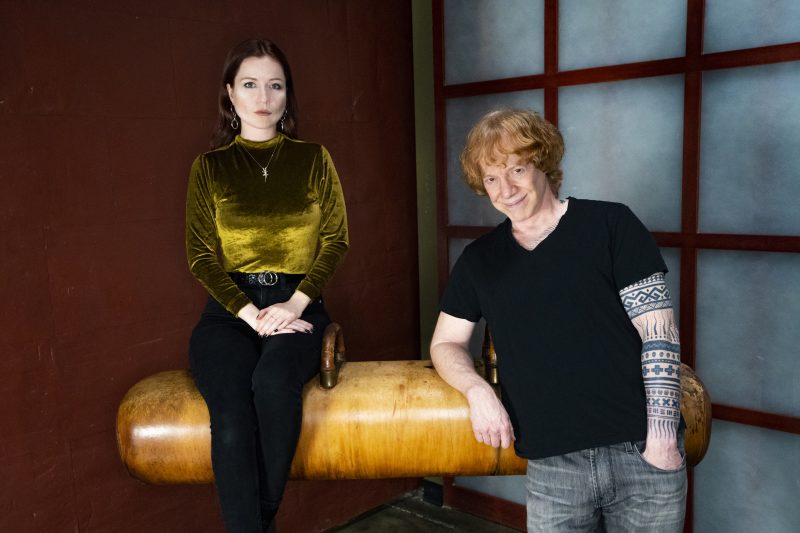
The visual side of Big Mess is led by Danny Elfman’s creative/art director, Berit Gwendolyn Gilma (www.beritgilma.com). With a background in digital arts and new technologies, she has been overseeing and art directing the music videos accompanying the album, as well as all other visual aspects of the release.
Deeply engaged in the digital art communities in Berlin, Los Angeles, and beyond, Berit introduced contemporary visual artists to Big Mess, such as Jesse Kanda, Sam Rolfes, and Sarah Sitkin. These are artists who work in the cutting edge of new media that include 3D, CGI, and artificial intelligence (AI), whose talents were selected to create imagery used for the album’s visual aesthetic and music videos.
Along with our interview with Danny, we spoke to Berit about how the visuals were curated for Big Mess.
Alex: I want to just get a sense of how you were working in the art direction for this intensely visual album that’s also very visceral. And the music kind of ties along with the tactile, textured, feel to the art direction. How did you approach this project? What was your starting point? Especially, for example, the artwork on the sleeve, which is something, unlike anything I’ve ever seen…
Berit: Yes, I think that Danny has always been strongly connected to the visual world because of his film scoring. He was such a big part of my childhood. The intention of this project from a creative director or art direction perspective was really just to connect him to more contemporary aesthetics and use new technologies to achieve that. So for the cover artwork, we 3-D scanned Danny. We worked together with Sarah Sitkin to create these digital grotesque-looking sculptures. As Danny has pointed out before – the way he used his body throughout his career is really a piece of art. And really, that’s just the extension of it: using new technologies. I think it worked out quite well. And you see that not just in the sleeve but in every single music video, we worked with different directors and different technologies. In total they are forming a beautiful collection that visually represents the project – it evolved into something complex and really big.
Alex: Yes, and I feel one of the reasons why “Sorry” is one of the key tracks on the record is it very much reflects the cover art. It’s almost like a title track relating to the cover art. How was that visual attained?
Berit: With “Sorry”, we worked together with Jesse Kanda who I have been following for a long time. I really appreciate his work. He’s kind of a legend in the 3D world, because of his whole aesthetic sensibility, it’s completely unique, really. Bjork worked closely with him. He basically came up with the whole aesthetic ambience of Arca and also FKA Twigs. These collaborations where somehow crucial to the perception of these young artists. I approached Jesse for “Sorry”, because he was one of the first artists to come to mind. We worked together with him over a stretch of time. “Sorry”, as Danny told you, was originally meant for Coachella (as well as “Happy”)– the stage there has these huge LED backdrops. Once Coachella got canceled, we basically made the visuals into a music video. Jesse creating this dark, somehow menacing creature. The camera is slowly revealing its details and it has little faces in there, as well as body parts and organs. It’s kind of abstract, but you also feel that it’s somewhere organic and human. It worked really well – it was so beautiful and so poetic and so dark, too. We then juxtaposed it with a live performance from Danny because he felt he wanted to be more present in the video. We made Japanese butoh makeup on him. liked how it turned out in the end because Danny’s performance just added a level of intensity. And it’s climaxing in the end with really fast cuts of the CGI visuals and Danny’s performance.
Alex: You were in Berlin when working on that video? Was it filmed in Berlin, or was it filmed elsewhere?
Berit: I had to escape L.A. because of Covid. And so for most of the project, I’ve been working remotely. I spent a lot of hours with Danny on the phone over the past 1,5 years. For “Sorry”, I was in Berlin while Jesse was in Japan working on it. We filmed Danny’s performance remotely over a Zoom session where Jesse directed. So really, this production was in the end done in three different countries. (laughs) But that’s just pandemic circumstances!
Alex: Right. And that workflow was applied as well to another fantastic video, “Love in the Time of Covid”, which feels very Berlin conceptually.
Berit: Yeah, so this one was really the full-on Berlin production. After my pandemic-inspired escape, I was in Berlin trying to make the best out of it so I reached out to a friend of mine who is a great photographer and filmmaker – Sven Gutjahr. He’s deeply connected to the queer community in Berlin and we are both into club aesthetics. That’s probably the reason why it does really feel very Berlin. I was inspired by the L.A. world of body modification using prosthetics. I had never worked with special effect makeup, but I saw it from almost a political standpoint where prosthetics kind of question norms of beauty and alter a persona. Especially in a post-gender world discourse, I think it’s a very interesting tool to use. And it’s been used by other artists in that way so I was inspired by that. I embedded this idea into Berlin culture. Sven and I, wrote the story together and we pitched it to Danny. Danny liked it. We made some tweaks and then we dove into this crazy production during winter in Berlin. It had below zero degrees and it was snowing. Everything was very short notice. It was just as Brexit happened so we had problems getting parcels we needed. Christmas holidays, New Year’s Eve, and lockdown – it was pretty intense conditions. Our main performer, a queer transgender person called Shrek666, was doing the prosthetics himself – he is luckily very skilled and I was so happy I found him. There is just not a big scene of special effects in Berlin, compared to L.A. We really pulled off the production within, basically, a month. It was really, really wild. But we hit the deadline and I’m super happy that it turned out the way it did. Danny has his cameos within the video where he’s on Tinder working out, a news reporter, and a weatherman (laughs). And the whole story is really just about, well, love in the time of Covid – it’s about intimacy and mental health. It’s about people going crazy and not being able to live out their needs. I thought because these are such basic human needs, it’s more interesting to tell the story from the perspective of a non-human, and in this case, it was an Ogre.
Alex: A literal, horny beast. Can you tell me anything about the video for “Insects”?
Berit: For “Insects”, I reached out to Sam Rolfes, who I’m really a big fan of, I have been following his work also for a long time. He is kind of like the shooting star of the new-media-digital-art-world from the last few years. He’s just such an electric cool character, full of energy, full of interesting cutting-edge ideas. So it was clear early on that I wanted to work with him and he was luckily up for it. We sent him the whole album and he just connected with the song “Insects”, I think it’s because it’s overlapping in a cool way with his world. Sam is working with a game engine in 3D so it’s an interesting approach to making a music video because the character and camera moves through this world. He worked together with his brother Andy Rolfes and their amazing team. They filmed one day in L.A., with Danny performing in front of a green screen and in a motion capture suit, and then the rest of it they did remotely in New York. I love the world they built, it’s Kafkaesque and strange. Danny is an insect who wakes up as a bug and dances himself through this world. It’s intense and wild. We had to give it an epileptic warning at the beginning.
Alex: Do you think there is some sort of social commentary on the nature of MMOs, Along with the Gregor Samsa insect congregation online type of feel to it? Or is that just incidental just to the imagery?
Berit: Do you mean if people actually saw that reference?
Alex: Is that an intentional reference, for example, given that this was made during lockdown and has this MMO feel?? My interpretation is, that as a society, we’re all metaphorically in World of Warcraft as people congregate online.
Berit: Maybe. I honestly didn’t think about it before. But you’re right. I’m sure some people feel like they are in their own world, similar to a game, And what happens to them and their mental health in a lockdown. Yeah, I think it does make sense. It’s definitely a strong reference.
Alex: Are we done with the visuals or are there more to come?
Berit: In total, we are producing seven music videos. So we have six so far and there’s going to be one to come still for the song “In Time”. I’m actually working on it right now with a director from New York called Zev Deans and an AI artist from Italy called Lorem. Zev is deeply embedded in that kind of old classic darker aesthetics, so it’s more like the classical film making and I thought it would be interesting to juxtapose this with something completely different – with artificial intelligence aesthetics. I have a background in digital arts and I’m interested in what can be done with new technologies visually. It’s my interest in computer science from an artistic point of view. And as I said before, I really wanted to use them for Danny as they are so interesting and cutting edge. Danny is a true artistic soul and I love to expose him to those things and just see how he reacts to them. He has always been super open to it, which I really appreciate.
Anyhow, so we’re working right now with an artificial intelligence to juxtapose with these old cinematic aesthetics. Let’s see how it goes. It looks promising, but, there is a certain degree of things we can’t control, which makes it risky, but even more fun and therefore it has more potential to be something really original.
Alex: So there was an intention to release videos online and it looks like that became a little bit more difficult of a task to maintain because of lockdown, obviously. And we’re in the middle of a pandemic. But there was originally an intention for the videos to come out on the 11th of each month?
Berit: Well, there was a conceptual idea of that with Danny because his last name Elfman basically means the 11th man. Danny is obsessed with the number 11. That’s just something I knew about him. So he came up with a crazy release marathon of releasing a video every 11th of the month leading up to the actual release on June 11th. Danny and I together decided on the sequence of releases. We collaboratively decided which director, which song, and when it’s going to come out.
We very intentionally chose “Happy” to be the Halloween release, followed up by “Sorry” because these were the two songs that Danny wrote first. Then everyone after that should represent both sides of the album. The music video for “In Time” will be the last one – it’s personally my favorite song on the album. I mean, all are great, of course, but this is really the one that’s really, really resonating with me. And it feels like it’s the appropriate song for the grand finale.
Danny Elfman will return to the stage with a live-to-film concert experience of Disney’s timeless holiday classic “Tim Burton’s The Nightmare Before Christmas on Friday, October 29th at the Banc of California Stadium. Order Tickets Here.
Big Mess is out now.
Follow DANNY ELFMAN
DannyElfman.com | Instagram | Facebook | Twitter | Spotify



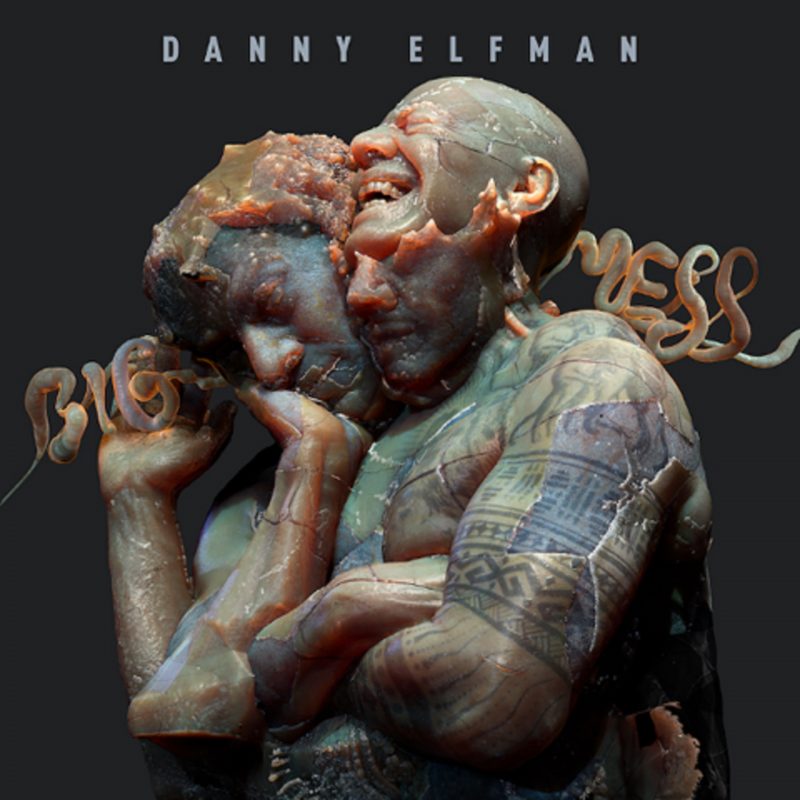


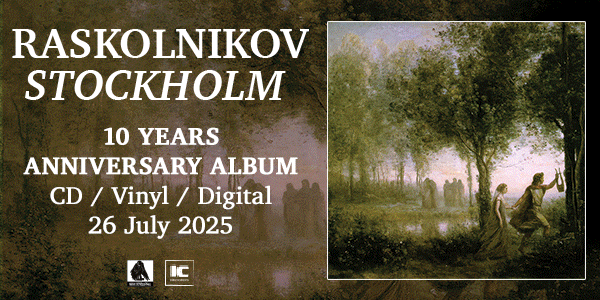

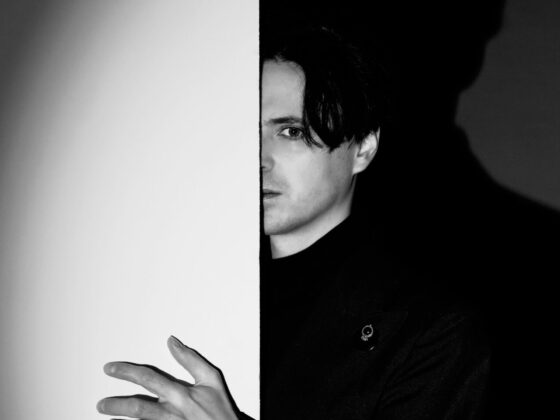

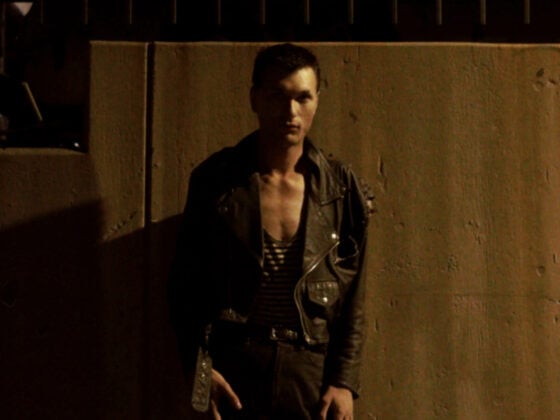
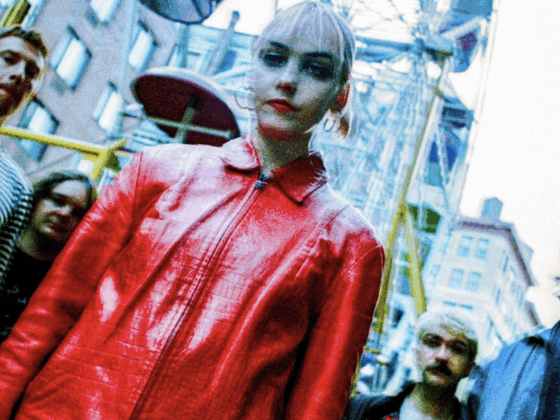
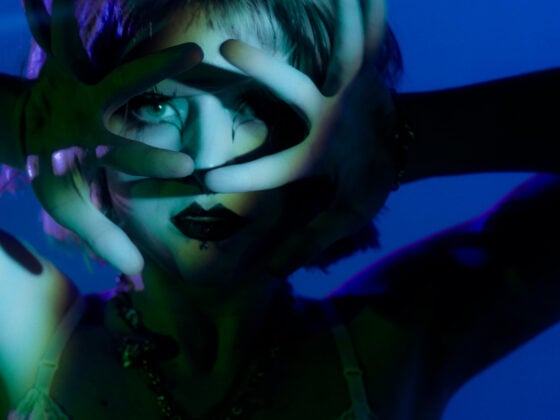
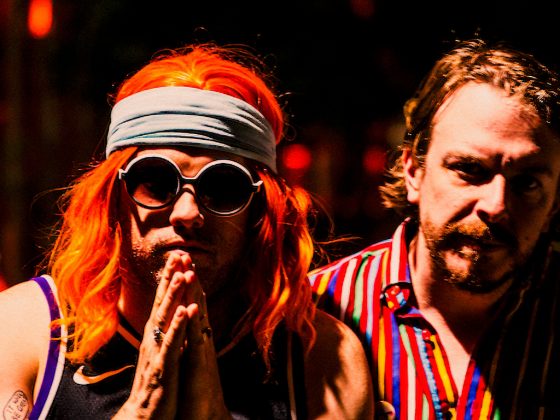
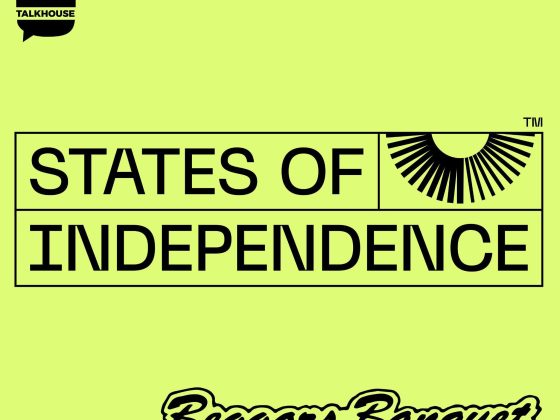

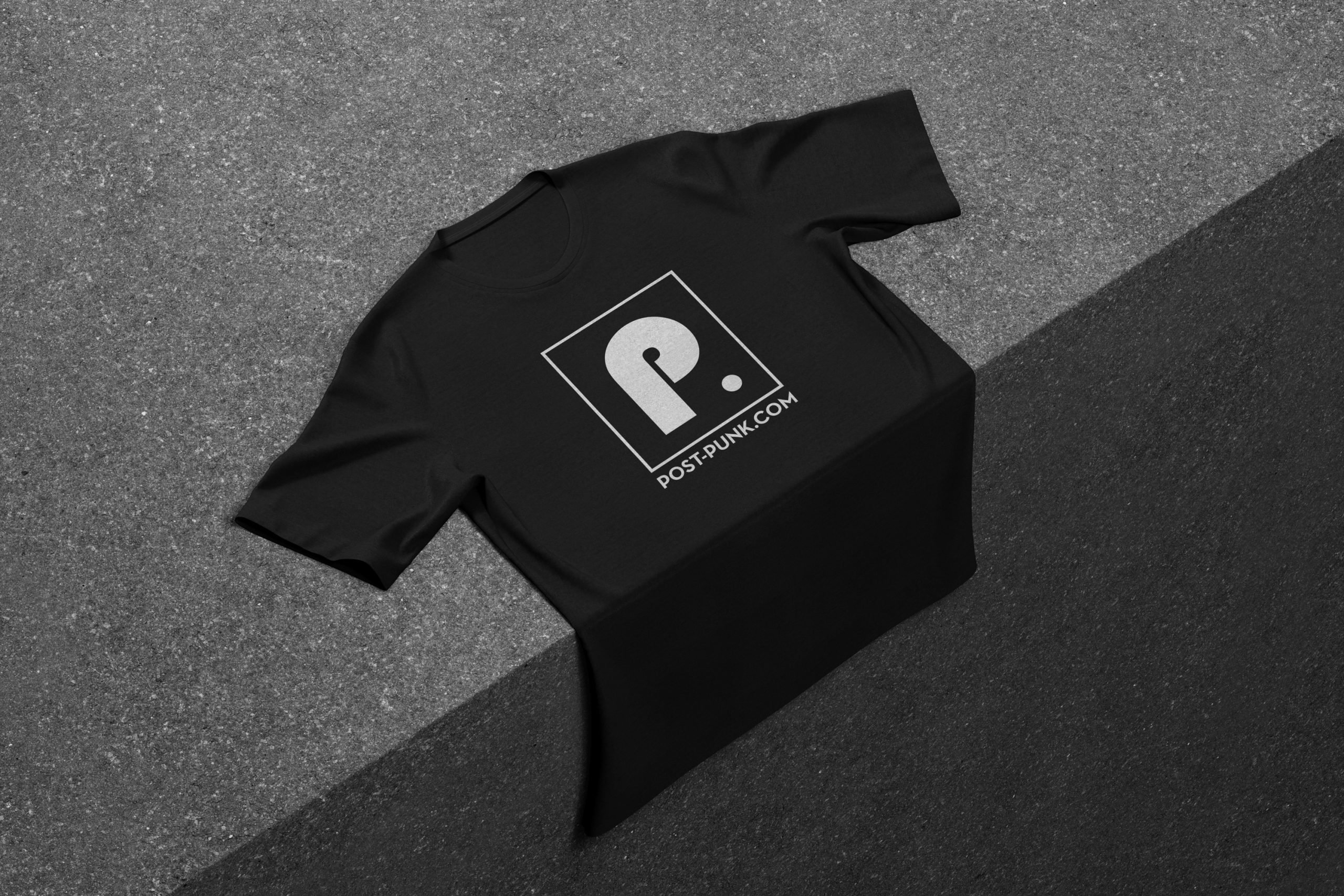 Or via:
Or via: